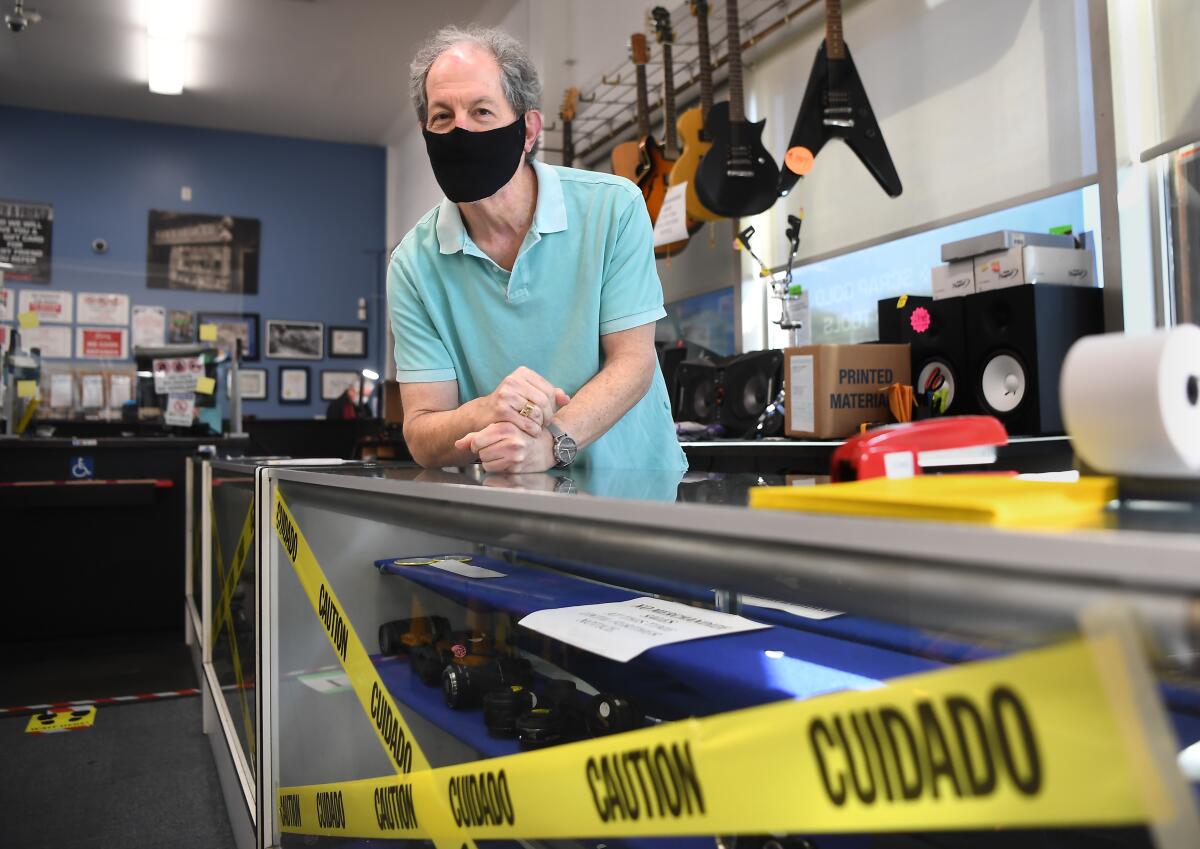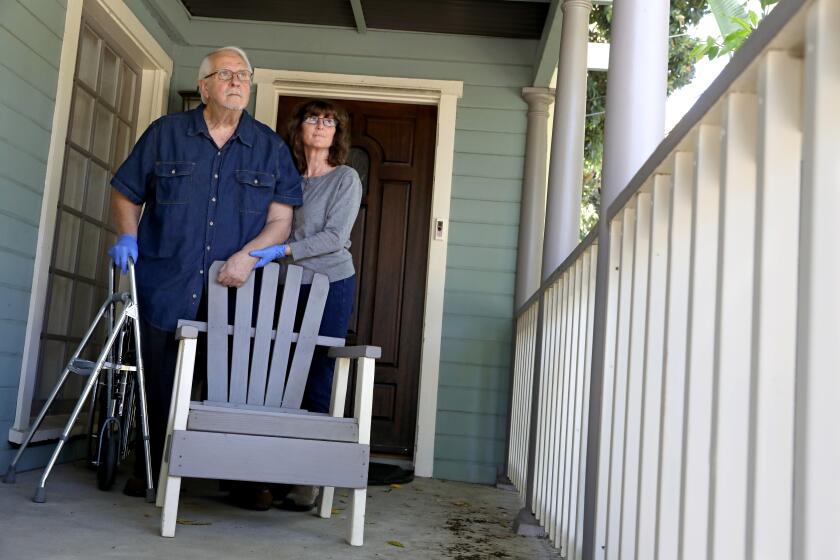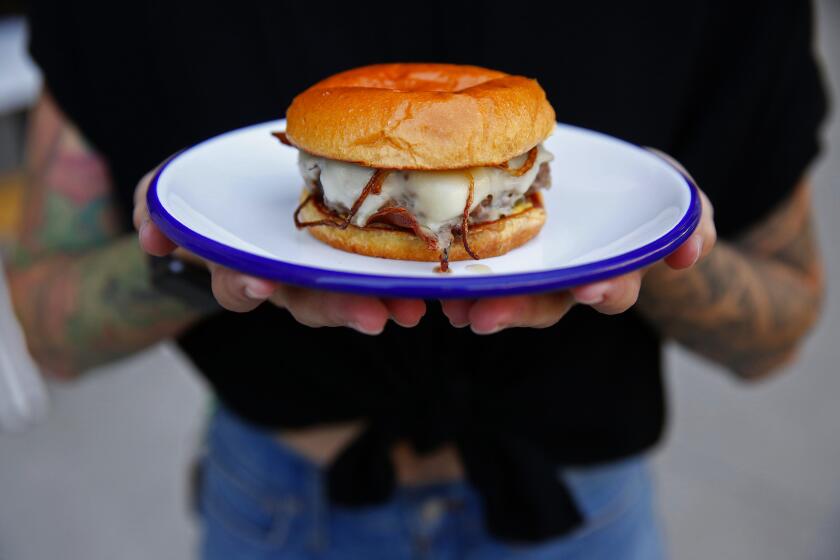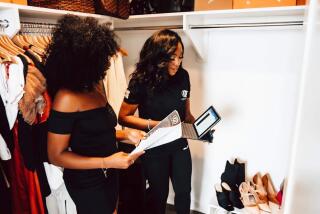Overlooked small businesses are finally getting federal loans. Challenges remain

- Share via
Danny Justman, manager of the Pawnmart pawnshop in Norwalk, was thrilled to see “$99,000 and change” show up in the company bank account Tuesday morning. That was his long-awaited slice of the federally sponsored Paycheck Protection Program intended to backstop small businesses amid the COVID-19 pandemic.
“It’ll ensure that our employees get paid for the time they were off without any penalty to sick days or vacation time,” Justman said. Pawnmart, which is open for pawns and redemptions but not yet for retail sales, has 13 employees.
About three-quarters of more than $600 billion in PPP money now has been distributed, according to the National Federation of Independent Business.
Small-business owners say they are being treated better under the latest round of emergency government-backed loans. That is just one of their concerns about surviving the coming months.
“Loans are starting to hit bank accounts. That’s great news,” said Holly Wade of the National Federation of Independent Business. “But there are still many concerns about reopening the economy.”
Independent businesses struggle to survive as federal government fails to deliver payroll protection loans.
The biggest worry is whether customers will return in sufficient numbers to keep businesses afloat once shelter-in-place orders lift, Wade said. They’re also anxious about payback and forgiveness terms for their loans.
Other worries, according to a May 1 National Federation of Independent Business survey of its membership: Shortages of hand sanitizer and face masks and the availability of credit from lenders in the future.
And many small businesses fear that opportunistic lawyers will leverage the COVID-19 pandemic to sue businesses trying to protect employees and customers in good faith, Wade said. Congress is grappling with the liability issue, which could affect companies of any size.
Congress approved a second, $310-million round of PPP funding after snafus at the SBA and banks — which manage the loan process — resulted in stories of business owners not being able to get applications filed or acknowledged in the first round.
If government guidelines are followed — such as using 75% of the money to keep workers on payroll — each business owner’s PPP loan will be transformed into a government grant.
Justman applied for a loan on the first day of the program, April 3, through Wells Fargo and, later, U.S. Bank. Neither application went anywhere.
On Saturday, Justman applied again through Quicken, whose software Pawnmart uses for payroll processing. That loan was approved within hours and the cash showed up Tuesday. Meantime, Wells and U.S. Bank continue to send emails to let Justman know his requests are still pending.
“The big banks are hidebound by convention and regulations and bureaucracy,” Justman said. Companies such as Quicken “are more nimble and way more eager and willing to get the job done.”
Larger companies took advantage of legal loopholes to grab a significant portion of the initial, $349-million round of PPP money. Under public pressure, those universities, several publicly held businesses and others with deep-pocketed owners, such as the Los Angeles Lakers basketball team, gave money back.
Some applicants now face criminal charges. On Tuesday, the U.S. Department of Justice charged a restaurant owner in Massachusetts with fraud for falsifying an application for a $438,000 PPP loan. A Rhode Island man was similarly charged for seeking $100,000 to pay employees at his wireless company, employees who turned out not to exist.
The PPP was supposed to save our small restaurants and businesses. But where’s the money?
Under public pressure more of the second round of money was directed through small banks and provisions were added to help ensure the money went to legitimate small businesses.
Loans for $150,000 or less made up 74% of the first round, but 90.1% of the loans in the second round, according to the Los Angeles Economic Development Corp.
California benefited more the second time around, the group said. The state received 6.8% of the 1.66 million loans issued in the first round, as of April 16. As of May 1, the state accounted for 9.8% of second-round loans.
Business groups are seeking more flexibility on what PPP loan money can be spent on and more clarity on what’s required to turn the loan into a grant. Some owners of restaurants and other small businesses worry that if they use the money for payroll now there won’t be anything left to start back up when customers feel safe to return. Business owners also told the National Federation of Independent Business they’re afraid they’ll be stuck with loan payments they can’t afford if they make an innocent mistake.

Help is on the way, according to Neil Bradley of the U.S. Chamber of Commerce. “The administration made clear further guidance is coming out.… There are some confusing aspects to how loan forgiveness works,” he said in a conference call with reporters Tuesday.
The business federation’s Wade doesn’t know what’s taking so long to clarify the rules. “It’s very frustrating,” she said.
Meantime, even as they contemplate a difficult future, many small employers are happy the money’s starting to roll in.
Lena Swann, owner of the All About the Dogue canine grooming shop in Emeryville, Calif., said via email she received notice from Wells Fargo at the end of last week that her $33,000 PPP loan had been approved. Her initial attempts to get funding hit a brick wall.
“This has been very stressful. Lots of sleepless nights,” Swann said. “Patience has been a virtue in this case.”
More to Read
Inside the business of entertainment
The Wide Shot brings you news, analysis and insights on everything from streaming wars to production — and what it all means for the future.
You may occasionally receive promotional content from the Los Angeles Times.













